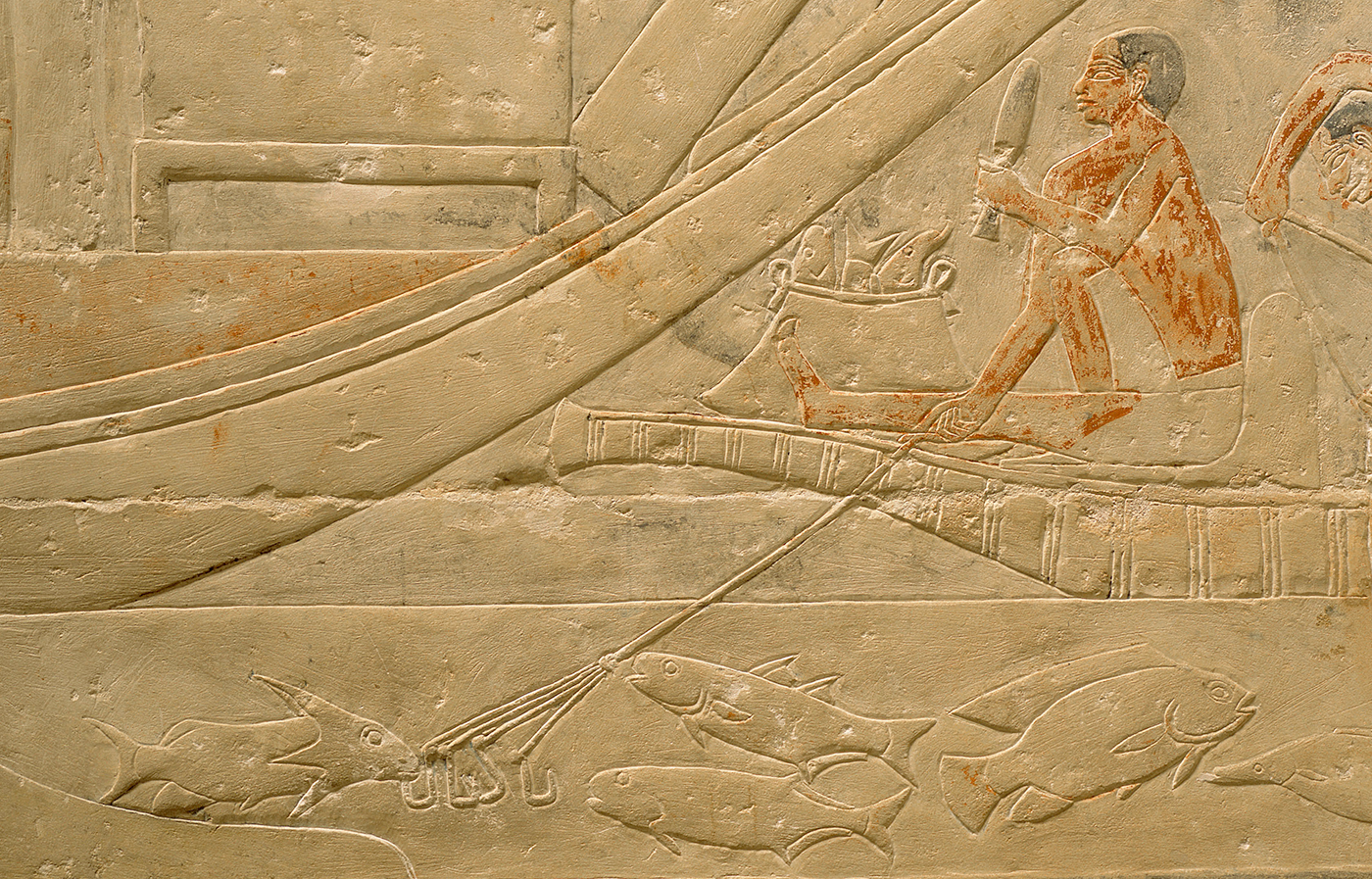The history of fishing
Fishing was an essential source of food in Prehistory and became a commercial activity in Antiquity. Deep-sea fishing first emerged in the 15th century, but really took off with the arrival of steam boats in the 19th century. The more powerful trawlers were able to pull larger nets. Recreational fishing, reserved for the wealthy classes in the 18th century, became more accessible as technological advances enabled better equipment to be produced at a lower cost.
A history of fishing practices
Fish fossils found during archaeological digs appear to show that Homo habilis then Homo erectus were the first fishermen, some 500 000 years ago. However, fishing probably only really developed after the appearance of Homo sapiens during the Upper Paleolithic period between 40 000 and 10 000 years BCE. Very little is known about the different fishing practices. Subsistence fishing at that time consisted in catching fish by hand or by using rudimentary tools made from natural materials of which no trace remains. It would have been mainly practised by populations established near lakes and rivers. The spear, net, line and rod seem to have appeared almost simultaneously in Egypt around 3500 BCE. Subsistence fishing changed little over the centuries and some techniques are still used today in recreational fishing in the West.
During Graeco-Roman Antiquity, fishing was the main subject of the Halieutika, the earliest surviving treatise on sea fishing written by the poet Oppian of Corycus. The Romans were major consumers and traders of the resources from the Mediterranean Basin. They fished mainly using different types of nets. Since the principle of refrigeration had not yet been developed, fish which was not immediately eaten was fermented and transformed into garum, a popular condiment.
During the Middle Ages in Europe, feudal lords owned the rivers and lakes. River fishing was strictly regulated and permitted for people in religious communities whose diets were punctuated by periods of fasting. However, from the middle of the 11th century, the construction of ponds developed, heralding the beginning of fish farming.
From the 15th century, deep-sea sea fishing and the trade of fish expanded. The Dutch formed fleets of herring drifters which pulled a long drift net and could remain at sea for weeks at a time. They were supplied with provisions by ventjagers (cargo boats) which also brought the catch back to shore.
The first trawlers appeared in Great Britain in the 17th century, but trawling expanded rapidly in the 19th century when sails were replaced by steam power. Boats became bigger and more powerful, enabling them to pull wide nets in deep water. The seafood trade intensified. The small English town of Grimsby became one of the major centres of commercial fishing in Europe and was connected by a direct railway line to London’s Billingsgate Fish Market (the world’s biggest fish market at that time).
During both World Wars, some trawlers were adapted to be used to sweep underwater mines and were armed to protect the fleet of fishermen from enemy vessels.
As for recreational fishing, in the 18th century fly fishing was initially reserved for the wealthy classes. It gradually became more accessible as technological advances meant better equipment could be produced relatively cheaply. To satisfy anglers, non-native species were even introduced into certain regions, as was the case with trout in Australia.
Fishing in the amphitheatre
The theme of fishing featured in gladiator fights under the Roman Empire. The retiarius was armed with a trident and a fishing net. His opponent was the secutor, whose helmet covered his whole face and closely resembled a fish head.
CAZEILS, Nelson, 2003. Autrefois la pêche en eau douce. Insolite, histoires, traditions et savoir-faire. Rennes : Éditions Ouest-France.
CHALINE, Olivier, LE BOUËDEC, Gérard, POUSSOU, Jean-Pierre, 2012. Pêches et pêcheries en Europe occidentale du Moyen Âge à nos jours. Revue d’histoire maritime. N°15. 2012. Presses de l’Université Paris-Sorbonne.
QUERRIEN, Armelle, 2003. Pêche et consommation du poisson en Berry au Moyen Âge. In : Bibliothèque de l'école des chartes [en ligne]. Tome 161, livraison 2. pp. 409-435. [Consulté le 09 avril 2016]. Disponible à l’adresse : http://www.persee.fr
SQUIRES, Victor R., 2009. The Role of Food, Agriculture, Forestry and Fisheries in Human Nutrition. Vol. 2, UNESCO, EOLSS. ISBN 978-1-84826-585-1









